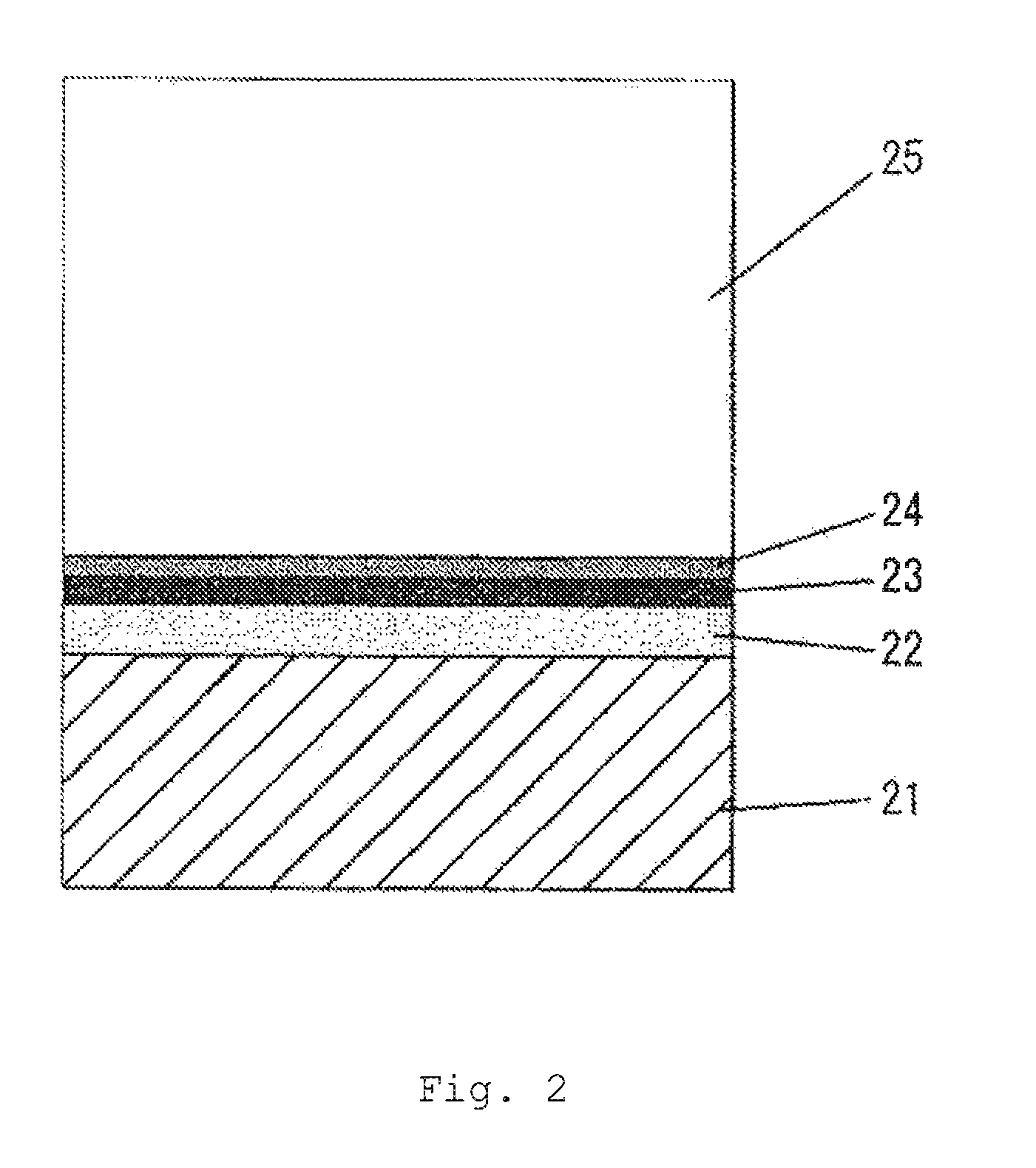Electrophotographic photosensitive member, process cartridge, and electrophotographic apparatus
a photosensitive member and electrophotography technology, applied in the field of electrophotography photosensitive members, process cartridges, electrophotographic apparatuses, can solve the problems of poor solubility of polyolefin resin, increased residual potential of electrophotographic photosensitive members or fluctuation of electrophotographic photosensitive members, etc., to achieve excellent film state and suppress image defects
- Summary
- Abstract
- Description
- Claims
- Application Information
AI Technical Summary
Benefits of technology
Problems solved by technology
Method used
Image
Examples
production example 1
Polyolefin Resin O-1
[0079]First, 75 parts of a polyolefin resin (BONDINE HX-8290, manufactured by Sumitomo Chemical Company, Limited), 90 parts of isopropanol, 1.2 equivalents of triethylamine with respect to the carboxyl groups of maleic anhydride in the resin, and 200 parts of distilled water were loaded into a sealable, pressure-resistant glass container provided with a heater and a stirring machine and having a volume of one liter, and the mixture was stirred with the stirring machine while the rotational speed of a stirring blade was set to 300 rpm. As a result, no granular resin precipitate was observed at the bottom of the container, but the resin was observed to be in a floating state. Here, 15 minutes after the observation, the heater was turned on to heat the mixture while the state was maintained. Then, the mixture was stirred for an additional 60 minutes while the temperature in the system was kept at 145° C. After that, the system was immersed in a water bath, and the t...
example 1
[0081]The characteristics of the resin were measured or evaluated by the following methods.
[0082](1) Content of Unit (A2) in Polyolefin Resin
[0083]The acid value of the polyolefin resin was measured in conformity with JIS K5407, and the content (graft ratio) of an unsaturated carboxylic acid was determined from the value with the following equation.
Content (mass %) of unit (A2)=(mass of grafted unsaturated carboxylic acid) / (mass of raw material polyolefin resin)×100
[0084](2) Constitution of Resin Except Unit (A2)
[0085]The content of a component except the unit (A2) was determined by performing 1H-NMR and 13C-NMR analysis with an analyzer (manufactured by Varian Technologies Japan Limited, 300 MHz) in o-dichlorobenzene (d4) at 120° C. The 13C-NMR analysis was performed by employing a gated decoupling method taking quantitativeness into consideration. A method of synthesizing the polyolefin resin is not limited to Production Example 1, and the resin can be synthesized by employing any...
example 2
[0099]An electrophotographic photosensitive member was produced in the same manner as in Example 1 except that the polyolefin resin used in the conductive layer in Example 1 was changed to a polyolefin resin O-2. The resin O-2 was formed of the repeating structural unit (A1) obtained by copolymerizing ethylene, the repeating structural unit (A2) obtained by copolymerizing maleic anhydride, and the repeating structural unit (A3) obtained by copolymerizing ethyl methacrylate, and had a ratio “(A1) / (A2) / (A3)” of 80.00 / 2.00 / 18.00 (mass %). The electrophotographic photosensitive member was evaluated in the same manner as in Example 1.
PUM
 Login to View More
Login to View More Abstract
Description
Claims
Application Information
 Login to View More
Login to View More - R&D
- Intellectual Property
- Life Sciences
- Materials
- Tech Scout
- Unparalleled Data Quality
- Higher Quality Content
- 60% Fewer Hallucinations
Browse by: Latest US Patents, China's latest patents, Technical Efficacy Thesaurus, Application Domain, Technology Topic, Popular Technical Reports.
© 2025 PatSnap. All rights reserved.Legal|Privacy policy|Modern Slavery Act Transparency Statement|Sitemap|About US| Contact US: help@patsnap.com



